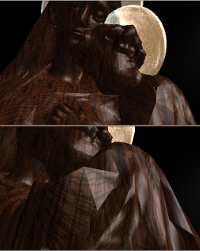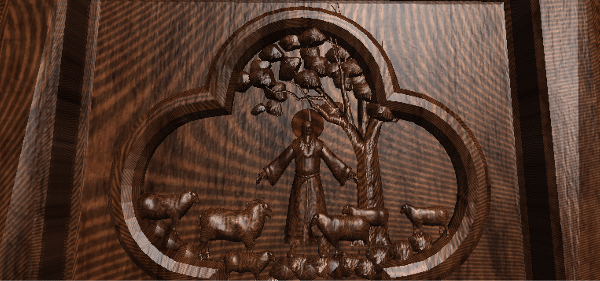Medieval History Database - Procedural Volumetric Wood
Procedural Volumetric Wood Test
The images at right show an early test of a new method of generating the "textures"
that are used to add details on the surfaces of objects. This method uses
pixel shaders (programs that run within the video card and operate on every pixel [dot
of color] on the surface of a polygon) to mathematically generate patterns - in this
case, wood grain - based on the X,Y,Z coordinates so that the wood grain realistically
extends through the entire block of wood. This mimics what occurs in nature, which
can result in greater realism. It also means that there is no longer any
need to try to cover complex geometric surfaces with a flat graphic image, which never
works very well and is extremely time-consuming (imagine trying to wrap wallpaper around
a statue or other complex object). Procedural generation also reduces
memory consumption since there's no longer any need to store so many images within the
video card.
Closeup:
|
| |||||||||||


